 I’ve continued quoting from St Anne, Grandmother of Our Saviour by Frances Parkinson Keyes, and those quotes will be in green:
I’ve continued quoting from St Anne, Grandmother of Our Saviour by Frances Parkinson Keyes, and those quotes will be in green:“The “priests and guardians” designated on the slab marking St Anne’s tomb have been identified, by historians more learned than this one can ever hope to be, as having lived in Apt during the 6th century.
They had acted none too soon in hiding their precious treasure. In 576 AD this city was badly damaged by an invading army of the Lombards and its surviving inhabitants, both lay and clerical, were scatted far and wide. After a century of desolation, another invasion took place, this time at the hands of the Saracens. But somehow, a few pious persons must have guarded the secret of the hidden tomb with the utmost caution, handing down their knowledge of it from one generation to another; for it cannot be wholly by accident that this hiding place was finally discovered in a great and glorious way, by a great and glorious person – none other than Charlemagne himself.”
Charlemagne regarded piously, St Anne, the mother of the Holy Virgin. He was knowledgeable of the Aptian tradition and so naturally he was keen to search for these relics in Apt itself.
“Is it possible,” Emile Rey inquires, after thus quoting from Kleinclausz and Charlemagne himself, “that a monarch so learned, so far-seeing, so powerful, could ignore St Anne? Hagiography replies ‘no!’ That is why the Carolingian litanies, composed during the Pontificate of Hadrian I, and in constant use at the palace in Aix-le-Chapelle contain the name of St Anne, whereas all other names (except for rare exceptions and for some special reason) were those of French saints.
“At what time and under what circumstances? On this point, history is positive. This pilgrimage could have been undertaken only after the coronation at Rome of the king who had become an emperor. “
At this point in the narration there are two versions to the story of the discovery of St Anne’s relics but, not that either seriously contradict the other but one story involves a small boy...and it the version given to us by Monsignor Dubreil, Archbishop of Avignon.
“It is related that Charlemagne, having concluded one of his many expeditions, had returned to Apt. But it is not known whether his visit was for the purpose of placing his sword beside that of Ceasar on the coat of arms of Apt or of being present at the consecration of the cathedral. As this church was one of the forty charches he had promised to build if victory crowned his expeditions, it would seem that Providence wished him to be present as a witness of the miraculous discovery of the relics.
On Easter Sunday in the year 792, the Emperor assisted at the Divine Office, surrounded by the faithful and his knights. Suddenly, a youth, blind and a deaf-mute from birth, son of a lord of the place named Caseneuve de Simiane, came into the church like one inspired and led by an invisible hand.
The congregation, evidently also inspired, immediately rose up instinctively and followed him to the steps of the sanctuary. By gestures he requested a stone slab to be lifted and the place to be dug up. The Emperor, who shared in the general excitement, ordered the boy to be obeyed.
Accordingly, the stone was removed and digging was begun, and soon the crypt was discovered where lay the relics, and whence bright rays issued. “Through an opening the cypress coffer was seen and the bright light illumined the place.
Then a prodigy was witnessed which is worthy of being recalled side by side with that by which the True Cross was recognized by S. Helena. The young man, suddenly cured, cried out: ‘It is she...’ And Charlemagne, greatly excited, also cried out: ‘It is she.’ The same words were repeated by the people who fell on their knees and broke into tears. In fact, in the coffer was found a winding sheet, that enclosed the relics, on which were inscribed those words that dispelled all doubt: ‘Here lies the body of St Anne, Mother of the Glorious Virgin Mary.’”
The story’s finale to be continued next week.





























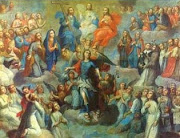





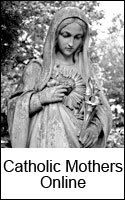

















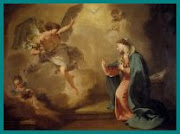









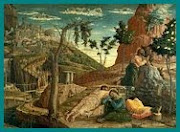




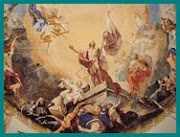



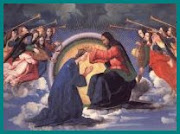











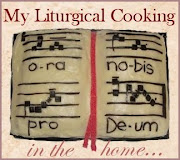
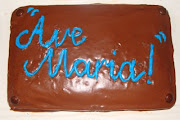



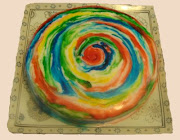


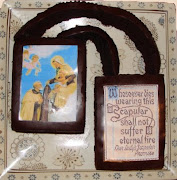

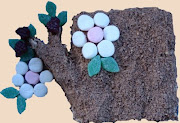


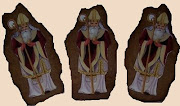







1 comment:
thank you for this post, anne! i'll be sure to include this in the children's history/religion studies.
oh, and just tagged you.
http://www.andthesethygifts.com/2008/10/02/i-believe/
Post a Comment